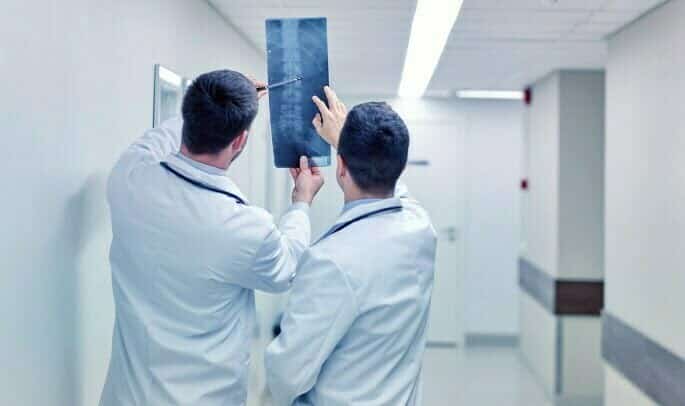Stress Fractures
Your spine is made of vertebrae—24 different ones in adults, up to 33 in babies and children. These vertebrae give your spine its strength and facilitate movement through their connection to the facet joints. However, with so many bones subject to so much movement, sometimes, things go wrong. When a vertebra slips out of position, it is called spondylolisthesis.
If you suspect you have cervical spondylolisthesis in Chicago, schedule an appointment with the Pain & Spine Institute.

Types of Spondylolisthesis
There are two primary types of spondylolisthesis. The first is simply called spondylolisthesis and refers to when there is a slipped vertebral body due to a variety of causes, some genetic and some degenerative. Isthmic spondylolisthesis is the second type, at it refers to when a vertebral body slips specifically due to a stress fracture in the pars interarticularis.
Of the two, isthmic spondylolisthesis is the more common type. This is because about five percent of the population will experience lumbar vertebral factures in their life, often while they are still children. This then allows the fractured vertebrae to slide forward and encroach on the sacral vertebral body.
Symptoms of Spondylolisthesis
Spondylolisthesis is the top cause of back pain in teens and young adults. However, most who have the condition don’t actually have any symptoms. Those who do might notice the following signs of lumbar spondylolisthesis in Chicago:
Muscle twitching in the back of the thighs
Stiffness in the back, especially the lower back
Pain when walking or standing for long periods of time
Pain when bending over
Numbness, weakness, or tingling in the ankles, feet, and toes

Spondylolisthesis Diagnosis
The first step in diagnosing spondylolisthesis is a physical examination. If your doctor determines there are signs of spondylolisthesis, they will then order some type of imaging study to see if there is an issue with the vertebrae. In most cases, this will be either an X-ray, an MRI scan, or both. If the diagnostic imagine determines that the condition is present, spondylolisthesis treatment in Chicago will begin.
Treatment for Lumbar Spondylosis in Chicago
In most cases, treatment is only needed when there is actual pain or limitation to the range of motion. When this is the case, we opt for non-surgical treatments first. These include:
Rest
Anti-inflammatory medications
Steroid injections
Physical therapy
Bracing
In rare cases of isthmic spondylolisthesis in Chicago, surgery will be needed. However, we take all possible measures to avoid this.
If you suspect you have a spondylolisthesis in Chicago, do not wait for your symptoms to worsen. Schedule your appointment with the pain specialists in Chicago today.
FAQs About Spondylolisthesis in Chicago
Essentially, you need to rest the lumbar spine. So lifting, twisting, and bearing a lot of weight should be avoided. Your doctor will make clear any specific restrictions you have.
If you continue to engage in activities that stress the spine without getting proper medical care, it can make the condition worse. Additionally, if yours is degenerative, it may naturally worsen on its own no matter what you do.
This all depends on how your condition presents. If you enjoy running or run as part of a specific sport you play, discuss this with your doctor. They can give you more specific advice.
Usually, it is somewhere between 6 and 12 weeks. However, for some, it can be a lifelong condition. We will be able to advise you better about your specific case once we see you in person and run the diagnostics we need.
